On this Sunday morning I had a few things in mind, a few things planned, as I headed for Death Valley:
— It was going to be a hot afternoon in the desert, at least five degrees hotter than average for a July afternoon, so I wanted to make a lot of temperature readings and comparisons. I do this for fun and for my temperature research for the Death Valley region.
— I wanted to chat with the Park Service at Death Valley — yes — for my research on Death Valley temperature records.
— A good slug of monsoon moisture was headed towards the region from the south and southeast, so the chances thunderstorms would be increasing, especially on Monday. I was interested in chasing and desert storm photography.
— And, it was near new moon, so the night skies would be plenty dark in and around Death Valley. My tripods and I were ready for some astrophotography.
This entry covers the “dark skies” part of my adventure. I had endured an afternoon of rather hostile conditions in Death Valley, from Stovepipe Wells near noon to the Furnace Creek area for the remainder of the afternoon to sunset. It was 120F to 123F for the entirety of this 8-hour period, and I survived parts of it in the air conditioned vehicle, in an air-conditioned eatery at the Furnace Creek Ranch, at the Furnace Creek pool, and at the Visitors Center. A good chunk of the afternoon was spent walking and driving around these parts and taking temperature measurements. I bore the full brunt of the heat for much of the afternoon, and I was a bit weary and beaten down by it. Nevertheless, I headed to Zabriskie Point towards sunset to get some pics, and then down to Badwater. Some fool was doing some photography way out on the salt flat at Badwater. It was 120F there at sunset.
There was a little moisture moving in to the southern portion of Death Valley, but no thunderstorms were nearby yet. It was looking like a nice and mostly clear evening for summer Milky Way photography. I needed an interesting foreground. The Ashford Mill ruins, about 40 miles to the south, could work out. Thinking back, I should have moseyed up to Rhyolite ghost town for this. It would have been 15 degrees cooler up there. But I was still thinking “Milky Way above distant thunderstorm with lightning” shots. Slim chance on the thunderstorm part, but the moisture was to the south and not the north, so I headed south along the Death Valley salt pan to Ashford Mill.
The pull-off to the Ashford Mill site and ruins is near the southern end of paved roadway in Death Valley. Badwater Road turns to the east, to Jubilee and Salsberry passes and Shoshone, just south of here. The elevation at Ashford Mill is 120 feet below sea level, and the temperature was near 118F when I arrived, around 9 p.m. There was a little breeze and some altocumulus clouds to the south, but otherwise nice clear skies. The stars were bright already and the Milky Way was starting to show. I shot in and around the remnant stone-walled structure near the end of the side road to the site. About an hour later, after a few dozen images of about 20 to 50 seconds in length, I had to call it quits. The wind was getting strong, dust was getting kicked up, and the blast-furnace air was getting to be too much. It is weird to feel such heat (it was about 114F now) with the Milky Way so bright and beautiful in the night sky!
It is a good idea to try to incorporate some sort of interesting feature into a night sky/Milky Way shot. There was a little light from dusk remaining to illuminate the stone ruins on my first few shots, but thereafter I needed to artificially light it up. I had a little household flashlight in the vehicle, fortunately, so I turned it on and set it on the ground. I propped it up with some dirt or rocks and pointed the brightest “middle beam” section into the “open window” parts of the ruins. This seemed to provide a decent, smooth, cast of light onto the entire thing. The flashlight was maybe 40 feet away and was not very bright, but it seemed to be near perfect for the long night-sky exposures. All of these shots were made with the Zeiss 15mm lens and the full-frame Canon 6D. ISO settings were mostly 1600-2000, and all were at f2.8. The longest shutter speeds were about 50 seconds. Longer exposures started to show too much star-trailing.
The heat and wind drove me back into the vehicle and the air conditioning, and I headed to higher elevations to the east. At Shoshone, fuel was available at a (closed) gas station. I was exhausted and wanted a motel room, and I found one to the north about 40 miles away in Amargosa Valley, on the CA/NV state line. On the way there I made one more Milky Way stop. And, there was occasional lightning to the distant east!


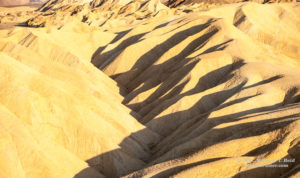
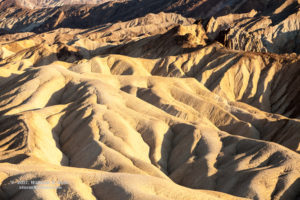
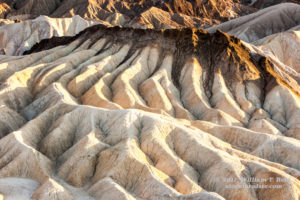
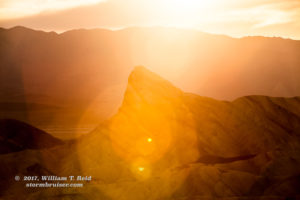
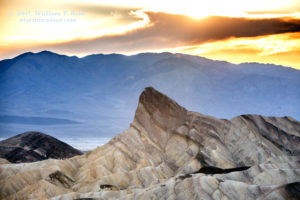
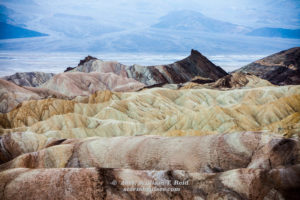
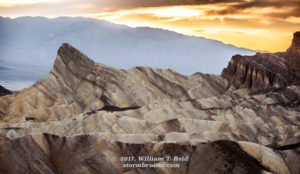
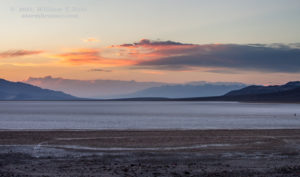
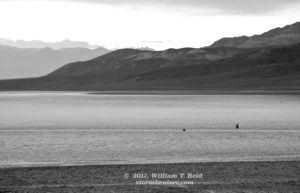
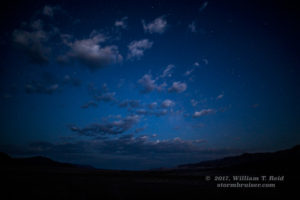
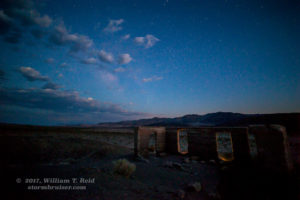
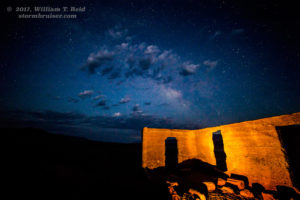
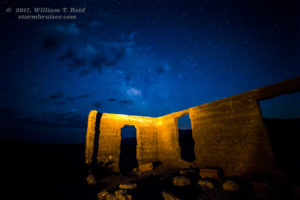
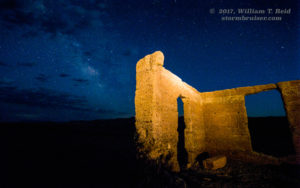
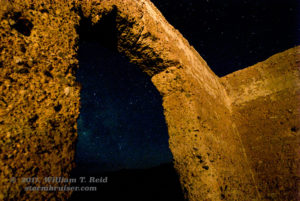
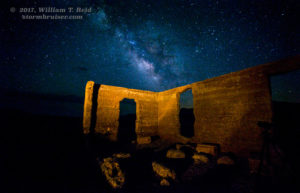
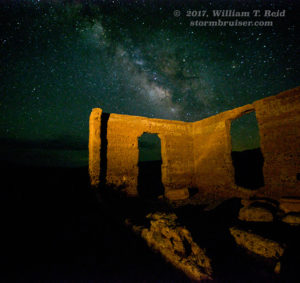
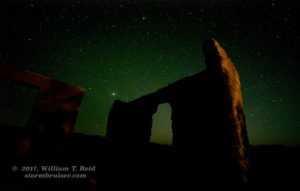
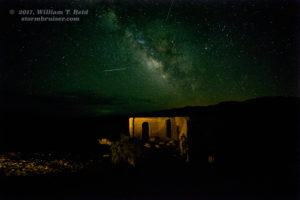
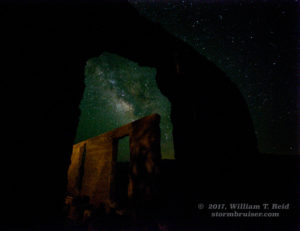
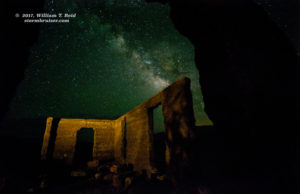
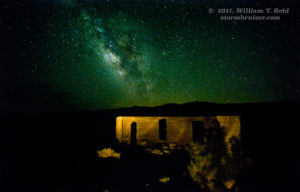
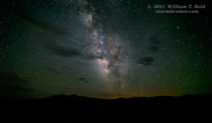
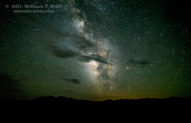
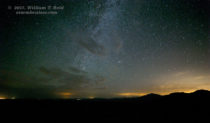
Leave a Reply
You must be logged in to post a comment.